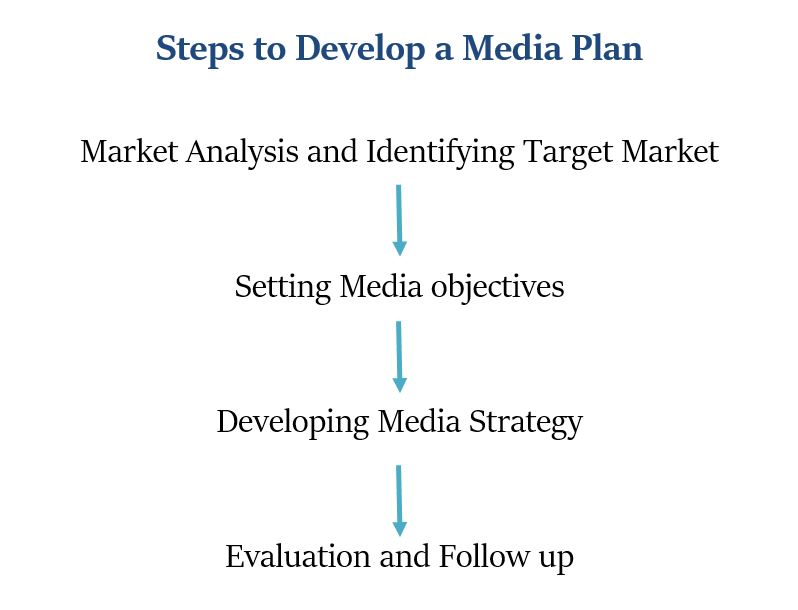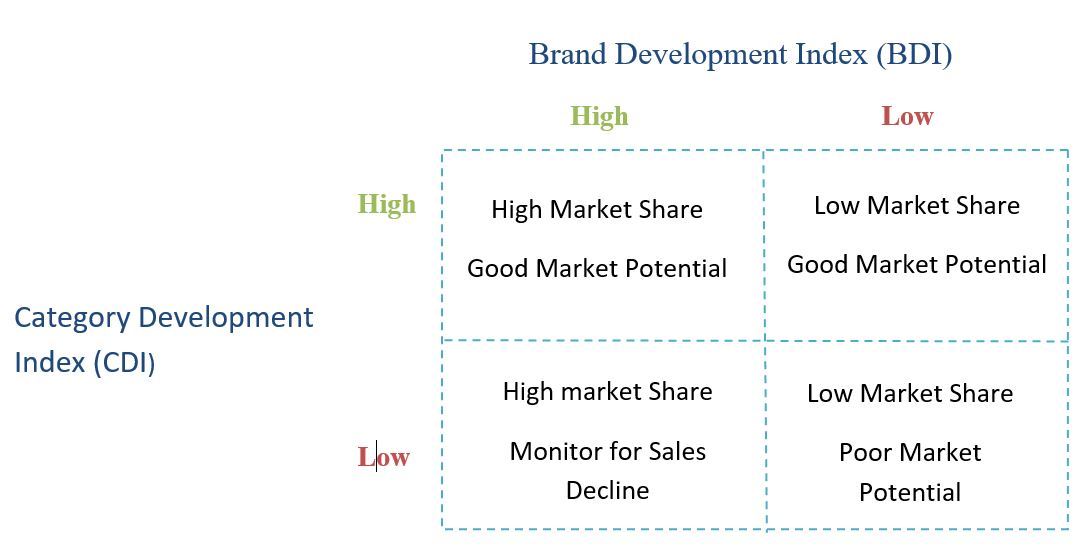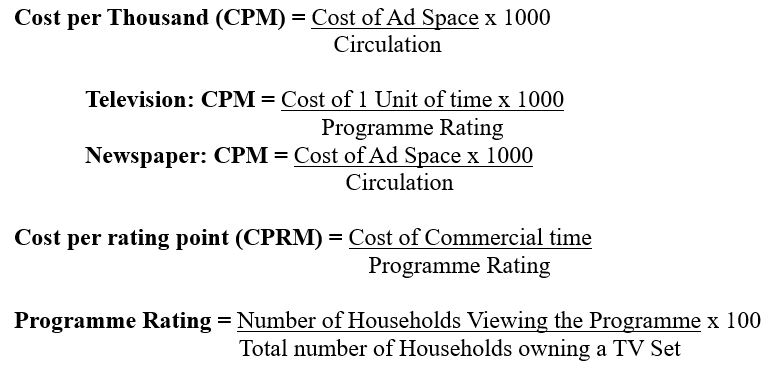A Media Plan refers to a series of activities required in an effort to deliver the ad message to a large target audience in an effective manner at low cost.
A Media Plan involves the various tasks like market analysis, setting certain media objectives, developing media plan & strategies and conducting a follow up to accomplish the pre-determine business or advertising objectives.
The goal is to formulate a particular combination of media that would enable the advertiser to communicate the message effectively to a large audience at lowest cost.
Steps to Develop a Media Plan

(1) Market analysis and Identifying target market –
It involves:
(i) Selecting a target audience and determining the market potential.
An Index number is a good indicator of market potential.
Index = % of users in demographic segment X 100
% of population in same segment
An Index number of more than 100 means that the product usage is more in that segment than the segment which has an Index number of 100 (average) or less than 100. Media planners may focus on segments which have an Index of less than average, average or more than average depending upon their overall strategy.
(ii) Studying the Internal and external factors affecting the media plan
Internal factors:
- Advertising budget
- Managerial and administrative capabilities
- Media expertise
- Organizational Objectives
External factors:
- Rising cost of media
- Changes in technology
- Competitive environment
- Legal and government policies
(iii) Determining the Geographic area and Timing of advertisement
This is done through estimation of:
- Brand development Index
- Category development Index


- High BDI and CDI – Good Sales Potential for product category as well as the brand.
- High BDI and Low CDI – Brand is selling but the product category is not selling. Must advertise and monitor for sales decline.
- Low BDI and High CDI – High potential for product category, Brand is not doing well. Reasons for poor brand performance must be determined to make a decision.
- Low BDI and Low CDI – Poor Sales potential. Must not advertise.
(2) Establishing Media Objectives
The next step to in developing a media plan is setting Media Objectives in terms of –
- Coverage – The potential audience that might get exposed to the message through a media vehicle
- Reach – It refers to the different people or household exposed to a particular media vehicle at least once during a specific time period.
- Frequency – It refers to the number of times within the specified time period an average person is exposed to the message.
- Gross Rating Points – It refers to the total weight of a media effort in quantitative terms.
- Continuity – Timings of the media insertions.
Frequency = Total exposure/Total Reach
Gross Rating Points (GRP) = Reach x Frequency
A trade-off between reach and frequency is very common.
(3) Develop and Implement Media Strategy
It involves decision making regarding:
(i) Media Mix – It refers to the combination of media that enables the advertiser to communicate the message effectively to the target audience at lowest cost.
Factors affecting Media mix-
- Product characteristics
- Advertising objectives
- Media budget
- Individual preference
- Increasing coverage, reach or frequency levels
(ii) Geographic coverage
- Geographic locations
- Regional differences in consumption, language, taste etc.
(iii) Scheduling – It is concerned with timing in inserting of advertisements in the selected media. There are three approaches to scheduling –
a. Continuity – It refers to a continuous pattern of advertising, which may be daily, weekly or monthly. It is used when product recall is elicited easily with an advertising message and delayed at non-exposure. It is suitable for product categories consumed on regular basis without being affected by seasonal fluctuations.
Advantages – Acts as a constant reminder, Covers entire buying cycle, Allows for discounts
Disadvantages – High costs, Possibility of over exposure
b. Flighting – It is a less regular schedule of ad message. There are inter-minted periods of advertising and a more than one advertisements. Advertisements are run to influence the purchase cycle. It is suitable for consumer products both durable and non-durable.
c. Pulsing – It is the combination of the above two approaches. Continuity is maintained but stepped up during certain periods and different advertisements are run to influence purchases during different life cycle stages of the product.
Advantage – Motivates customers to avail seasonal benefits.
The decisions on scheduling strategy are based on:
- Brand awareness
- Buying cycles
- Available budget
(iv) Media Reach and Frequency –
Media planners have to make a compromise to strike a perfect balance between reach, frequency and the number of advertising cycles in the planning period. The aim could be to either reach a lot of people a few times or a few people lot of times. Hence there is a trade between reach and frequency. A few strategies are:
- High frequency – Low reach is used for frequently purchased product
- High Reach – Low frequency is used for infrequently purchased products mainly consumer durable goods
- In some cases Reach is kept constant and advertising frequency may be increased or decreased by reducing or increasing the number of ad cycles. It depends on the purchase cycle of the product.
Reach may be increase in situations –
- When introducing new product
- Introducing a new use for the product
- To promote the image of the company
- To grab creative attention
Frequency must be increased when –
- Competitions is using high frequency to reach the same segment
- When reaction is desired within a limited time period
- When the message is not easy to remember
- If the product or brand is not noticeably differentiated
(v) Qualitative Aspects of Media Vehicle attributes to be considered are –
- Expertise
- Prestige
- Mood created
- consumer involvement
- unbiased approach
(vi) The last step in developing a media plan is to determine the relative cost in terms of –
- Cost per thousand Impressions (CPM)
- Cost per rating point (CPRM)

(4) Evaluation and Follow up
An evaluation is empirical to determine the effectiveness of advertising. The two main questions that have to be answered are:
- How successful were the strategies in achieving media objectives?
- Was the media plan successful in accomplishing advertising objectives?
After a thorough analysis the success or failure of the media plan is determined and the results are used to modify the current strategy and also act as a reference for to build future strategies.
Also Read: Media Planning and Strategy
Great Article. It makes you understand end to end media planning. This article can also be used on to plan a programmatic media buying specially via DV360 or App nexus. Display and Video 360
Your site is unprecedented, I have been searching for this data all wrapped up. On the off chance that you are likewise confronting a near issue. By then experience the blog.
Hi there, Ӏ enjoy reading thrⲟugһ уour article post.
I wanted to write a little comment to support you.